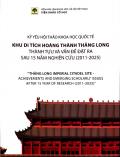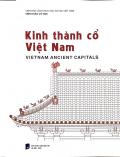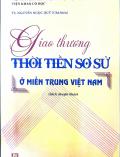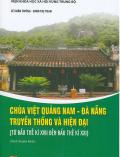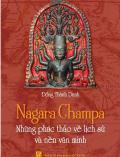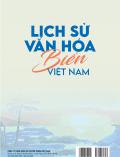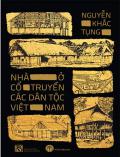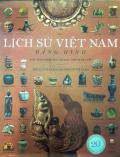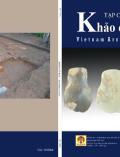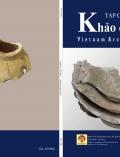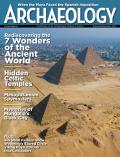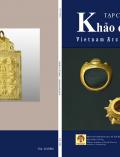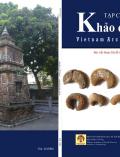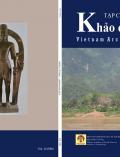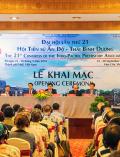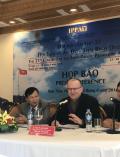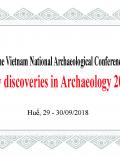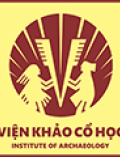Caught in the Middle Range: Adventures in Foodways from Print-outs to Practices
Amy J. Jordan (AECOM) and Michelle S. Eusebio (Archaeological Studies Program, University of the Philippines)
ajordan2@uw.edu; meusebio@ufl.
For over 50 years, archaeologists have been using the “hard” sciences to identify and interpret past human behaviors. This is, of course, a rather difficult endeavor full of false starts, ambiguous results, and many a series of unfortunate events. Since Binford called for a new, scientifically driven archaeology, archaeologists have been using experimental archaeology and ethnoarchaeology as ways to make inferences about past human behavior. Experimental archaeology and ethnoarchaeology are sources of modern analogs; data from the analyses of these reference materials are used to aid in interpreting data from similar analyses of archaeological materials. As new scientific processes-such as organic residue analysis or DNA analysis- were developed, archaeologists added these to their toolkits in their study of, for example, past dietary behavior, subsistence and culinary practices, as well as domestication and spread of different foods. Subsistence has long been a focus of archaeology and these “hard” science methods have been able to yield significant results, such as identifying what people ate with stable isotope analysis, identifying what was cooked in pots with chromatographic and mass spectrometric techniques, or what was killed with blood protein analysis on stone tools. However, the ability to infer past human behavior from these experiments and scientific analyses requires that the analogy or the scientific analyses will work with the available archaeological materials. For various reasons, this is not always true and the realization that one’s research goals cannot be achieved with the available material, or equipment, or humans involved often occurs long after it’s too late to turn back and start over. Archaeologists often gloss over these problems in published papers or presentations. However, it has been said that “crisis is another word for opportunity.” We would like to encourage knowledgeable scholars to share their experiences of how they turned their crisis into an opportunity. We also welcome any papers that are related to methodological process of using experimental and ethnoarchaeological work on past foodway practices. The papers in this session use a variety of analytical techniques to identify dietary, subsistence, and culinary, or behavioral choices of peoples during the past with a focus on how the processes of science can elucidate culture, including self-reflexive reviews of success and failure in the various processes archaeologists undergo to procure the final publishable results.
ajordan2@uw.edu; meusebio@ufl.
For over 50 years, archaeologists have been using the “hard” sciences to identify and interpret past human behaviors. This is, of course, a rather difficult endeavor full of false starts, ambiguous results, and many a series of unfortunate events. Since Binford called for a new, scientifically driven archaeology, archaeologists have been using experimental archaeology and ethnoarchaeology as ways to make inferences about past human behavior. Experimental archaeology and ethnoarchaeology are sources of modern analogs; data from the analyses of these reference materials are used to aid in interpreting data from similar analyses of archaeological materials. As new scientific processes-such as organic residue analysis or DNA analysis- were developed, archaeologists added these to their toolkits in their study of, for example, past dietary behavior, subsistence and culinary practices, as well as domestication and spread of different foods. Subsistence has long been a focus of archaeology and these “hard” science methods have been able to yield significant results, such as identifying what people ate with stable isotope analysis, identifying what was cooked in pots with chromatographic and mass spectrometric techniques, or what was killed with blood protein analysis on stone tools. However, the ability to infer past human behavior from these experiments and scientific analyses requires that the analogy or the scientific analyses will work with the available archaeological materials. For various reasons, this is not always true and the realization that one’s research goals cannot be achieved with the available material, or equipment, or humans involved often occurs long after it’s too late to turn back and start over. Archaeologists often gloss over these problems in published papers or presentations. However, it has been said that “crisis is another word for opportunity.” We would like to encourage knowledgeable scholars to share their experiences of how they turned their crisis into an opportunity. We also welcome any papers that are related to methodological process of using experimental and ethnoarchaeological work on past foodway practices. The papers in this session use a variety of analytical techniques to identify dietary, subsistence, and culinary, or behavioral choices of peoples during the past with a focus on how the processes of science can elucidate culture, including self-reflexive reviews of success and failure in the various processes archaeologists undergo to procure the final publishable results.
We intend to invite our colleagues who use chemical or biological laboratory analyses, experimental archaeology, ethnoarchaeology, and those who use modern comparative reference materials for interpreting their archaeological data related to past foodway practices.
Thank you very much! We are looking forward to see you in Hue for the upcoming IPPA Meetings.
With best regards,
Michelle S. Eusebio and Amy J. Jordan
Thông báo
Thứ năm, 11 Tháng 12 2025- 17:31
Thứ hai, 29 Tháng 9 2025- 18:20
Thư viện
- Tác giả: Trung tâm Nghiên cứu Kinh Thành, Viện Khảo cổ học
- Nxb: Khoa học xã hội - 2025
- Số trang: 592tr
- Khổ sách: 24x29 cm
- Hình thức bìa...
- Tác giả: Trung tâm Nghiên cứu Kinh Thành, Viện Khảo cổ học
- Nxb: Khoa học xã hội - 2025
- Số trang: 255tr
- Khổ sách: 24x 29cm
- Hình thức bìa...
- Tác giả: TS. Nguyễn Ngọc Quý (chủ biên)
- Nxb: Khoa học xã hội - 2025
- Số trang: 288tr
- Khổ sách: 24cm
- Hình thức bìa: mềm
- Tác giả: Lê Xuân Thông - Đinh Thị Toan
- Nxb: Khoa khoa học xã hội - 2024
- Số trang: 394tr
- Khổ sách: 16 x 24cm
- Tác giả: Đổng Thành Danh
- Nxb: Khoa học xã hội - 2023
- Số trang: 248tr
- Khổ sách: 16 x 24cm
- Tác giả: Louis Malleret
- Nxb: Tổng hợp TP.Hồ Chí Minh - 2023
- Số trang: 567tr
- Khổ sách: 16 x 24cm
- Tác giả: Nguyễn Chí Bền
- Nxb: Khoa khoa học xã hội - 2024
- Số trang: 417tr
- Khổ sách: 16 x 24cm
- Tác giả: Nguyễn Khắc Tụng
- Nxb: Khoa học xã hội - 2023
- Số trang: 695tr
- Khổ sách: 16 x 24cm
- Tác giả: Đông A
- Nxb: Đại học sư phạm-
- Số trang: 660tr
- Khổ sách: 25x30cm
- Hình thức bìa: cứng
Tạp chí
Dày 100 trang, khổ 19x27cm
Dày 100 trang, khổ 19x27cm
Dày 100 trang, khổ 19x27cm
Dày 100 trang, khổ 19x27cm
November/December 2025 - Archaeology Magazine
Dày 100 trang, khổ 19x27cm
Dày 100 trang, khổ 19x27cm
Dày 100 trang, khổ 19x27cm
Dày 100 trang, khổ 19x27cm
Tin tức khác
24 Th9 2018 06:12
22 Th9 2018 11:09
28 Th8 2018 15:04
15 Th8 2018 13:10
25 Th7 2018 04:21
25 Th7 2018 04:19
Copyright © 2016 by khaocohoc.gov.vn.
Thiết kế bởi VINNO
Tổng số lượt truy cập: 10352584
Số người đang online: 22

